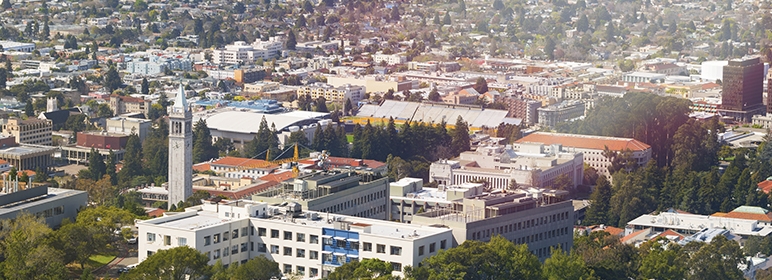Partnering with neighboring jurisdictions – Educating and supporting contactors
As the solar marketplace continues exponential growth, local governments are experiencing an influx of solar permitting applications. This case study highlights the efforts of the City of Berkeley’s Department of Planning and Development to enact a streamlined permitting process for rooftop solar photovoltaic (PV) systems that helps lower costs for consumers and serves as a model for other jurisdictions.
Background
With solar PV installation poised to double in 2016, local governments face a looming challenge
The U.S. Department of Energy (DOE) estimates that soft, or nonhardware, costs of solar power, such as installation labor, transaction costs and supply chain costs, account for 64 percent of the total cost of a new solar photovoltaic (PV) system.[*]
Local governments have control over two variables that can reduce these costs: permitting processes and their associated fees, which comprise approximately 4 percent of the total costs. The design and administration of the permitting process creates an opportunity for local governments to directly reduce solar costs to consumers.
Berkeley Thinks Regionally
Processing more permit applications with the same amount of resources
Berkeley is a partner with local universities and eight neighboring cities in the East Bay Green Corridor, created to strengthen the region’s support for green industries, environmental resiliency and green employment opportunities. In 2010, they identified guidelines for a uniform solar energy permitting process across multiple jurisdictions as a priority in order to drive the local solar market and bring it to scale. Their Regional Solar Policy Initiative created standardized processes for single-family residential solar installations:
 Streamlined permitting – Rapid over-the-counter permitting in six cities; 3-7 day turnaround in three cities
Streamlined permitting – Rapid over-the-counter permitting in six cities; 3-7 day turnaround in three cities- Uniform permit application
- Innovative structural guidelines allowing bypassing of expensive and time-consuming engineering assessments
- Cost-recovery permit fees in all cities
Creating a uniform permitting process for the region allowed East Bay solar companies to reduce their soft costs because they were able to reduce time spent dealing with nine unique permit applications to filing one standardized form. It also resulted in reduced permit application errors, saving the building department many hours of staff resources.
"What these guidelines do is allow homeowners to bypass the expensive structural engineering process," said Carla Din, director of the East Bay Green Corridor. "When you put a system on your roof, there’s sometimes uncertainty about whether or not your rafters can support the modules, and so you bring in an outside structural solar engineer. What we did is come up with a prescriptive process that would apply to 80-95% of the homes in the Green Corridor and could save up to $3,500."[ii]
Smoothing the Transition for Contractors
Solar companies want to spend as little time as possible dealing with permitting
According to a nationwide survey conducted by Clean Power Finance in 2012, one in three installers avoids selling solar in areas with difficult permitting, some requiring up to eight weeks for processing. City of Berkeley building department officials were sensitive to contractors’ perspectives when transitioning from over-the-counter permitting to electronic submission because they realized any change might pose difficulties.
Part of their solution was to continue allowing over-the-counter submissions even after the online portal was available. When applicants would submit in person, building officials took the opportunity to instruct them on the new electronic system, thereby avoiding any confusion the online process may have presented. The result was an easier transition and greater online submissions with fewer errors.
Lessons Learned
The City of Berkeley’s support of rooftop solar installations by streamlining the permitting process in their region through collaboration and by taking the time to train local contractors to use new electronic forms is paying off. As of April 2015, the city reports it is at 45 percent of its 2020 goal of 3,200 residential and commercial solar installations and currently generates more than 10,000 megawatt-hours of solar electricity a year.
For information about the SunShot Rooftop Solar Challenge Golden State Solar Impact (GSSI) program or to learn how your jurisdiction can implement solar PV streamlining best practices, contact Marcus Gilmore at the Center for Sustainable Energy.
For more details about Berkeley’s solar permitting, visit Solar Permitting and Submittal Requirements.

